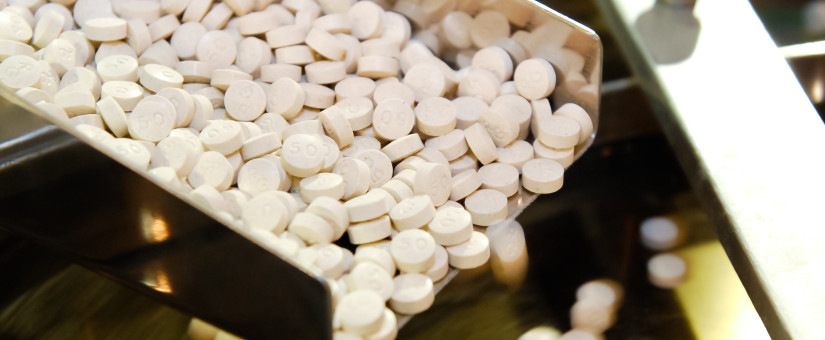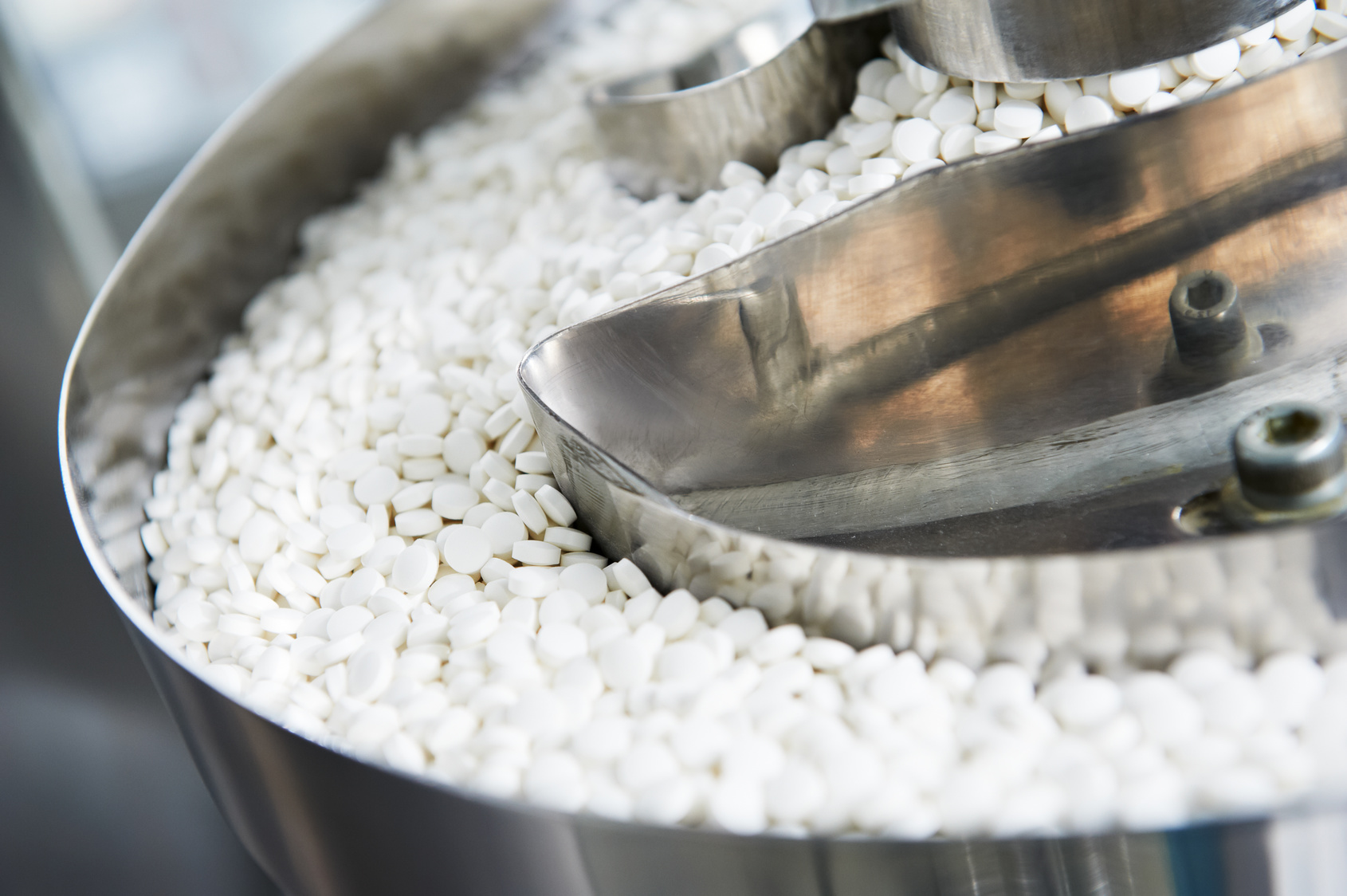
EMA published a Draft guideline on manufacture of the finished dosage form (Part I)
- 26 August 2015
- bulk, control strategy, CTD, design space, finished product, GDP, intermediate, manufacture, process description, RTRT, storage, transport,
On 9 July 2015, EMA released for 6 months public consultation the Draft guideline on manufacture of the finished dosage form.
It should be mentioned here, that the need to update and revise the CPMP/QWP/486/95 note for guidance on manufacture of the finished dosage form (current guideline) was originally presented in the document entitled Concept paper on the need for revision of the note for guidance on manufacture of the finished dosage form.

The intention of revision was not to repeat the information already stated in other guidance documents or create new guidance, but to update information about manufacture of finished dosage form in line with recent development and the current EU legislation (the current guideline was developed before the introduction of common technical document format (CTD) of dossier, and before introduction of new current directive (2001/83/EC)). Additionally, revised guideline should reflect principles and concepts defined in other relevant guidance documents (ICH Q8, Q9, Q10, guideline on process validation, guideline on real time release testing). Finally, with new manufacturing practices and more complex manufacturing chains a need to incorporate holding times and conditions as well as shipping transportation conditions has
been identified and discussed.
The revised guideline will replace the current document (CPMP/QWP/486/95).
The objective of the guideline on the manufacture of the finished dosage form is to provide clarification on the type and level of information that should be included in the CTD Module 3 of the marketing authorisation application (MAA) dossier with respect to the manufacturing process description. This description should include information about critical steps and intermediates and provides a link between the pharmaceutical development, the proposed control strategy and process validation.
The headings of the guideline follow the structure of the CTD format Module 3, Section 3.2.P.3 Manufacture.
Batch Formula
The revised guideline requires definition of a batch for continuous manufacture because in this particular case the information about batch size in traditional terms might not be relevant. The expected size of one campaign (e.g. period of time) should be stated.
Description of Manufacturing Process and Process Controls
In case a Design Space is proposed (as an element of the manufacturing process), this should be presented in a transparent manner.
In case of continuous manufacturing, the comprehensive, suitably detailed description of manufacturing process is expected to be provided. Emphasis should be given on frequency of in-process controls and it should be clearly stated when the release testing is performed.
The manufacturing process description should be adequately justified by development, in particular any process operating conditions or ranges.
Every drug product manufacturing process (including manufacturing durations, hold times and conditions during transport) has an associated control strategy. The control strategy should be outlined based on development studies. It is expected that different control strategies may be utilised in case real time release testing (RTRT) is proposed, a design space is claimed or a standard manufacture is performed.
RTRT recognises that under specific circumstances an appropriate combination of process controls (critical process parameters) together with pre-defined material attributes may provide greater assurance of product quality than end product testing and the context as such be an integral part of the control strategy. The principle of RTRT may be applied during the stages of manufacture of chemical and biological products resulting in the elimination of all, or certain, specific tests in the specifications of the finished active substance or finished medicinal product.

Design space describes the relationship between the process inputs (material attributes and process parameters) and the critical quality attributes. It is expected that operation within the design space will result in a product meeting the defined quality. Operating within the design space is part of the control strategy. The relationship of the design space to the overall control strategy should be discussed (in the section 3.2.P.5.6).
It is important, that the same requirements apply to the level of detail in the manufacturing process description irrespective of the development approach, i.e. if the product has been developed by the traditional or enhanced approach.
It would generally be expected that regardless of the number of finished product manufacturing sites proposed, essentially the same manufacturing process would be followed for a specific medicinal product, however, some technical adaptations might be necessary (justification required). Irrespective of differences in the manufacturing process, the final drug product should be characterised by one release and one shelf-life specification.
In contrast to technical adaptations as described above, truly alternative manufacturing processes, which use different principles and may or may not lead to differences in the in-process control and/or drug product quality are not acceptable (e.g. using different sterilisation procedures – terminal sterilisation of end product vs. aseptic manufacture using sterile filtration).
Controls of Critical Steps and Intermediates
All critical steps and intermediates isolated during the manufacture of the finished drug product should be listed in this section including details about the sampling strategy, applied test methods and acceptance criteria. The justification for the identification of steps as critical or non-critical should be provided including link to experimental data in pharmaceutical development (e.g. risk assessment table) if applicable.
A manufacturing process generally involves a series of sequential processing steps, where the output from one step is isolated before it is incorporated into the next processing step. Any isolated material can therefore be considered as bulk and may be stored and as necessary transported in a suitable container before further processing. Therefore, bulk storage is any stage in the manufacturing process of any pharmaceutical product where bulk is held in storage prior to further processing e.g. bulk solution prior to filling, granulates, etc.
It should be stated whether any bulk product is to be stored and if so, under which conditions. The maximum holding times of bulk product should be stated and appropriately supported by data (e.g. challenging the maximum hold time in process validation studies or by providing dedicated stability studies (on at least two pilot scale batches) for the bulk storage).
Transportation of bulk between manufacturing sites should be explained and justified. In this case, the principles of the guideline on Good Distribution Practice (GDP) and guidance given in GMP Annex 15 on transport should be taken into consideration.


Process Validation and/or Evaluation
It is considered necessary to provide production scale validation data in the marketing authorisation dossier at the time of regulatory submission, for example when the product is a biological/biotech product or where the applicant is proposing a non-standard method of manufacture (i.e. non-standard methods of sterilisation). In these cases, data should be provided in the dossier on a number of consecutive batches at production scale (data on minimum of 3 production scale batches should be submitted unless otherwise justified) prior to approval.
Generally, for other types of products, full scale manufacturing process validation is not requested at the time of application but the process validation scheme to be followed should be included in the dossier. The scheme should include a description of the manufacturing process, the tests to be performed and acceptance criteria, a description of the additional controls in place and the data to be collected.
All details you will find in the Draft guideline on manufacture of the finished dosage form.
References:
- Guideline on manufacture of the finished dosage form, Draft, EMA/CHMP/QWP/245074/2015
- Concept paper on the need for revision of the note for guidance on manufacture of the finished dosage form, EMA/CHMP/QWP/324350/2013
- ICH guideline Q8 (R2) on pharmaceutical development, EMA/CHMP/ICH/167068/2004
- Guideline on Real Time Release Testing (formerly Guideline on Parametric Release), EMA/CHMP/QWP/811210/2009-Rev1
- Guideline on process validation for finished products – information and data to be provided in regulatory submissions, EMA/CHMP/CVMP/QWP/BWP/70278/2012-Rev1




